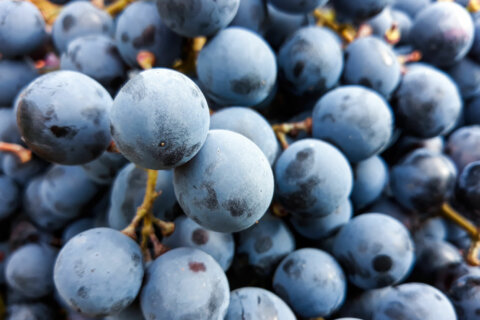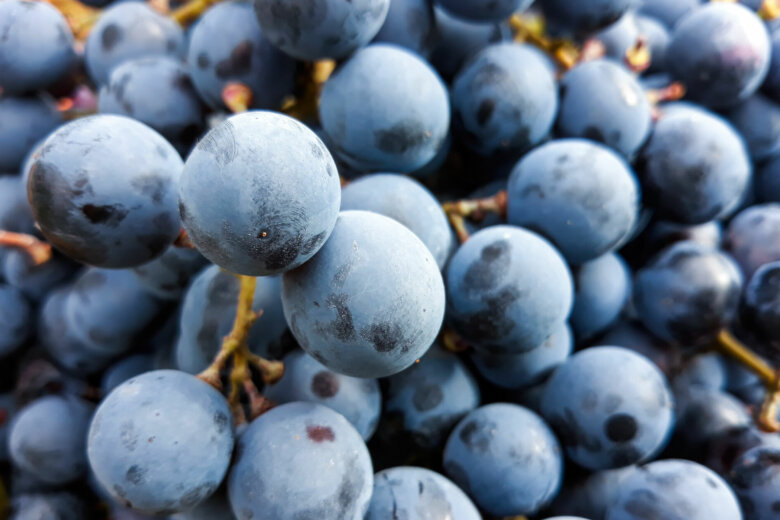
Today is International Grenache Day, and there are plenty of reasons to celebrate; namely, the variety of wonderful Grenache-based wines from around the world.
Grenache has proven to be a diverse workhorse of a varietal, adding depth, body and fruit to blends as well as offering juicy fruits and chunky texture on its own. It can be found in simple table wines as well as cult status superstars. It is known by many names, including Garnacha, Cannonau, Alicante and Garnatxa, all depending on where in the world you are.
Grenache is a red wine grape known mostly for its supporting role in French Chateauneuf du Pape wines. But under the right circumstances, it can shine on its own. And it is the perfect transitional wine — just like the last bowl of oatmeal in Goldilocks — it’s not too big, it’s not too little, it’s just right.
Surprisingly, Grenache is one of the most widely-planted grape varietals in the world. The hardy, sun-loving grape is generally spicy, with accents on soft red and black berry flavors and, thanks to mild tannins, has a softer mouthfeel on the palate.
In France, as mentioned above, it is usually the dominant grape when blended with other Southern Rhone Valley varietals, such as Mourvèdre and Cinsaut. It is also found in many rosé wines in southern France and parts of Spain. It has gained huge popularity in Australia, where its softer fruit qualities are used in “GSM” blends with Syrah and Mourvèdre.
In the early 1960s and through the 1980s, Grenache was planted throughout the San Joaquin Valley of Central California, where it was mainly used as a blending component for jug wines. But in the mid-1980s, it became the little darling of the Rhone Rangers movement in the Central Coast region of California.
Today, it can also be found thriving throughout California as well as southern Oregon and parts of Washington state.
Here are a few Grenache wines to enjoy today, as well as the rest of the year.
One of my favorite Spanish wines in the under $20 category is the 2018 QUO Grenache Old Vines from the Campo de Borja region in the northwest province of Aragon. This lovely wine displays aromas of cherry and strawberry on the bouquet and lush, silky flavors of raspberry, strawberry and jammy red berry that keep building and deepening through the finish. The seductive, intense fruit and fat, round flavors make this wine shine. $15
From the Cotes Du Rhone region in southern France comes the delicious 2018 Rasteau Cotes du Rhone Prestige, a charming blend of 65% Grenache, 25% Syrah and 10% Mourvedre, boasting an aromatic bouquet of black fruit, licorice and cocoa on the nose and flavors of ripe blackberry, raspberry and smoked meat on the front of the tongue. This wine is both bright and complex at the same time. A touch of black pepper and black licorice on the juicy finish is enough to keep you coming back for another sip. $20
Australian winemakers love playing around with Grenache, and I think the 2017 Torbreck Juveniles GSM, from the Barossa Valley, Australia, is a fun blend of Grenache, Shiraz (Syrah) and Mouvedre. It shows up in the glass with wonderful aromas of violets, black cherry and blueberry jam followed up by luscious flavors of cherry cola, black raspberry, licorice, and spice on a medium-bodied frame. The fruit-driven finish is round and expansive. $27
While some of the most famous Grenache growing vineyards in the world are in the warmer climes of the Southern Rhone Valley of France or the Priorat region in Spain, the Edna Valley, just south of San Luis Obispo in California, is gaining popularity for their cool-climate version. The 2016 Qupe Grenache Sawyer Lindquist Vineyard is Certified Biodynamic using 91% Grenache and 9% Syrah. It is elegant and layered, with a purity of fruit and wonderful aromas of violets, black cherry and blueberry jam followed up by luscious flavors of kirsch, red cherry, and red plum on a medium-bodied frame. Just a hint of cinnamon on the finish adds a touch of sophistication. According to the winemaker, “It’s more like Pinot Noir than it is to Chateauneuf du Pape!” $35
Listen and subscribe to the “The Vine Guy” podcast on Podcast One








